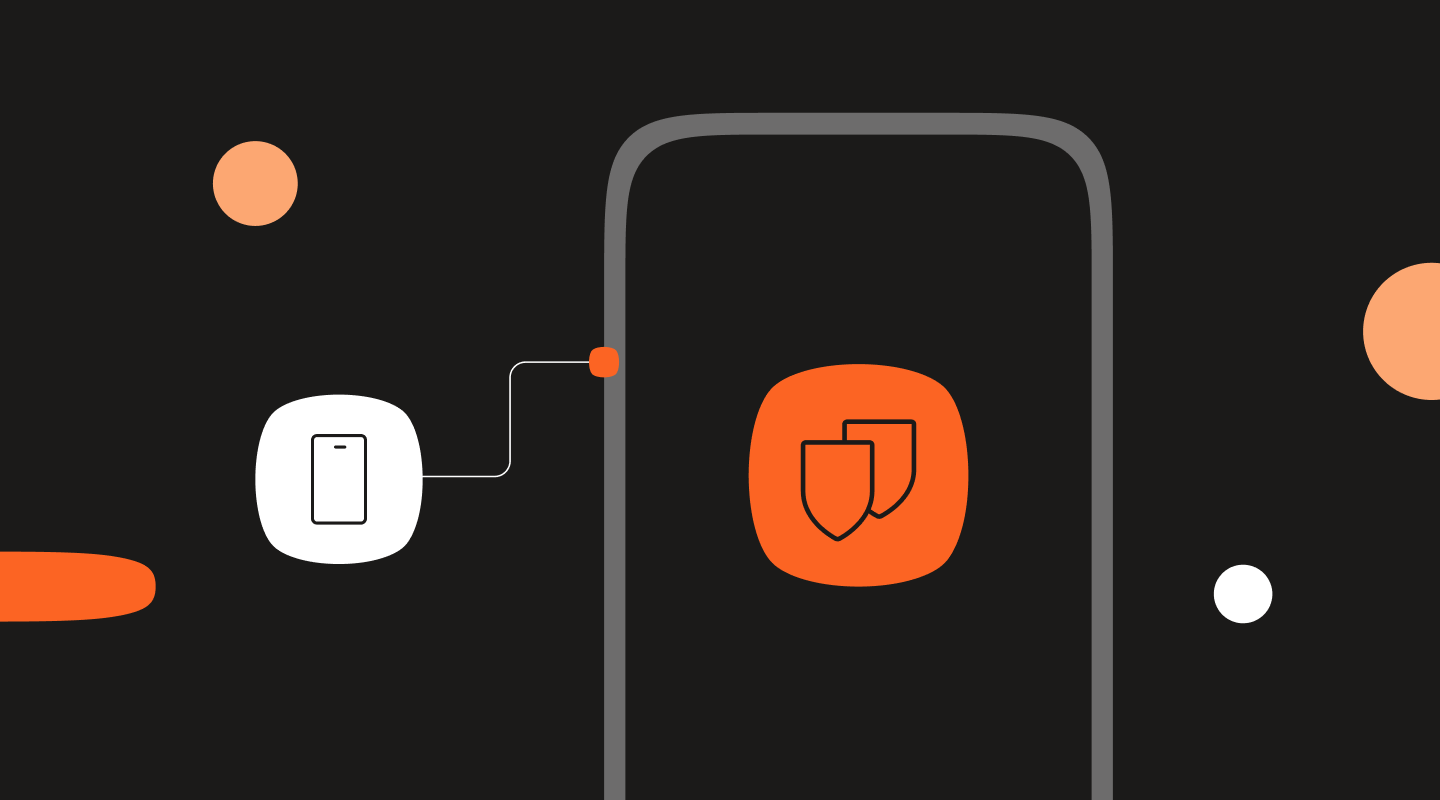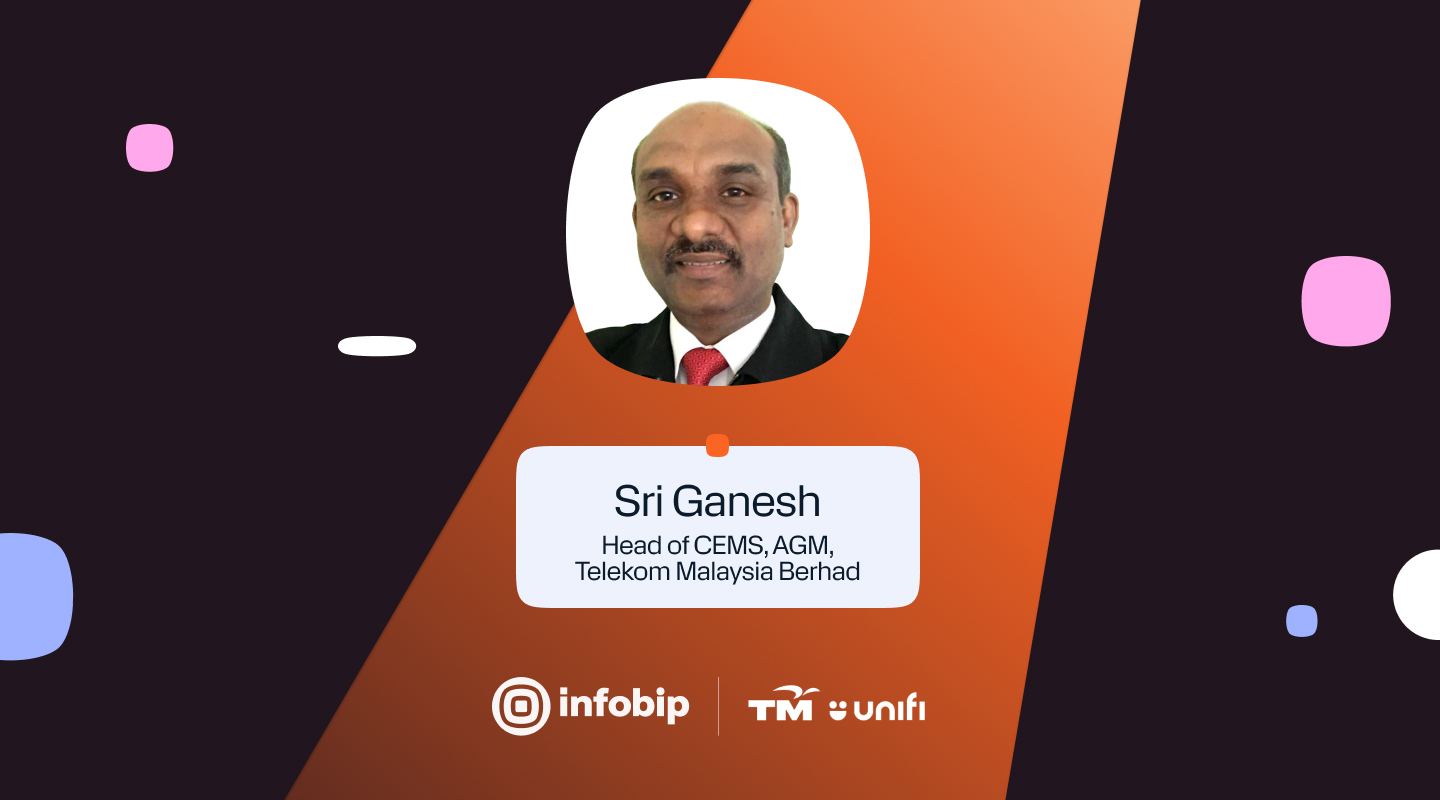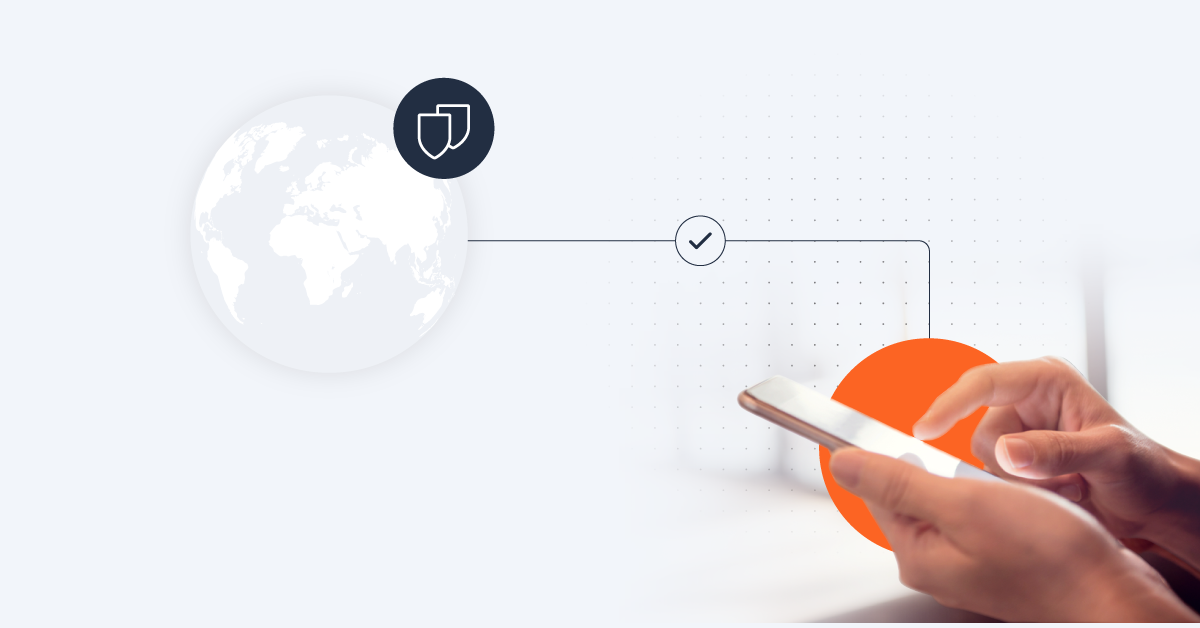13 strategies for Internet Service Providers to improve customer experience in 2025
Discover 13 proven customer support strategies for Internet Service Providers to improve response times, manage customer interactions, and boost loyalty.

One day, approximately 15 years ago, we all turned in our pagers and flip phones for the ultimate all-in-one gadget: the smartphone.
With the power of the internet in the palm of our hands, our landline and cable TV bills are fading away, and the focus is placed on wireless interactions.
But even today, customers still rely on their Internet Service Provider (ISP) for fixed services such as home internet, cable TV, and phone calls. And with the rise of remote work, online learning, and streaming, customers expect these connections to be reliable, fast, and easy to manage.
Still, Internet Service Providers need more than just great connectivity. They need a customer experience strategy that focuses on seamless communication and customer service, high-quality interactions, and modern digital tools that help them meet customers where they are.
This guide highlights how ISPs can digitize their customer journey, implement smarter customer support strategies, and unlock new revenue opportunities, all while keeping loyal customers happy.
The growing demand for high-speed connectivity
The European Union aims for every household to have high-speed internet coverage by 2025 and gigabit connectivity by 2030. In the United States, rural broadband initiatives continue to address underserved areas where households still lack access to reliable fixed services. While, in Latin American and Caribbean households, residential fixed broadband should increase to 56.7% by the end of 2025.
For Internet Service Providers, upgrading networks and investing in infrastructure is just the start. The real challenge is pairing this with a strong customer communication management approach and a customer portal that allows subscribers to control their service plan, pay bills, and request support without waiting for a phone call.
Key challenges ISPs face today
In addition to meeting underserved markets, telecom providers need to face the current and potential threats being brought on by other technologies, providers, and events that are out of their control, including:
Cord-cutting and OTT competition
Since 2012, U.S. pay-TV providers have lost around 25 million subscribers, and the number is growing. Today, roughly 8 in 10 U.S. households still have cable, but by 2030 that number is expected to fall to just 55%.
Streaming giants like Netflix, Disney+, and Spotify are the clear winners here, capturing audiences with flexible, on-demand content. The message for Internet Service Providers is clear: legacy TV bundles are no longer enough to keep customers loyal. To stay competitive, ISPs must diversify their offerings with streaming partnerships, higher-speed internet packages, and innovative add-ons that deliver value beyond cable.
Customer experience gaps
Customers no longer tolerate six-hour appointment windows, opaque billing processes, or waiting days for service activation.
Common frustrations include:
- Missed or vague technician appointments that disrupt customers’ schedules
- Billing errors and unclear charges flood customer service teams with complaints
- Complicated self-installation processes that often force customers to call support
- Slow response times when problems do arise, creating negative brand perception
These pain points result in churn. When switching providers is easy, ISPs that don’t modernize their customer interaction approach will quickly lose customers, no matter how good their product or service might be.
Economic pressure
ISPs are also facing economic pressure that affects both their operations and their customers’ wallets. Inflation, rising energy costs, and increased competition are squeezing margins. Meanwhile, households are becoming more selective about the services they pay for.
To stay profitable, Internet Service Providers must find ways to:
- Operate more efficiently through automation and managing customer interactions digitally
- Reduce contact center load by shifting routine inquiries to self-service customer portal
- Increase ARPU strategically through value-added services and upsells rather than price hikes
- Invest wisely in infrastructure projects that future-proof networks without overextending budgets
13 strategies to future-proof your ISP business
Here’s how Internet Service Providers can deliver better experiences, grow revenue, and reduce churn, all while running leaner operations.
1. Digitize the entire customer journey
Build journeys that start and finish on digital channels. Let customers scan QR codes on ads to check service plan availability, configure packages, and book installation appointments directly in chat. This creates a measurable, seamless offline-to-online experience and improves lead conversion rates.
And this doesn’t have to compete with your mobile app. Digital channels and apps can work together. Use chat to start the journey (quick checks, lead capture, appointment scheduling) and guide customers to your app for ongoing account management, billing, and plan upgrades. This creates a cohesive experience rather than a fragmented one.
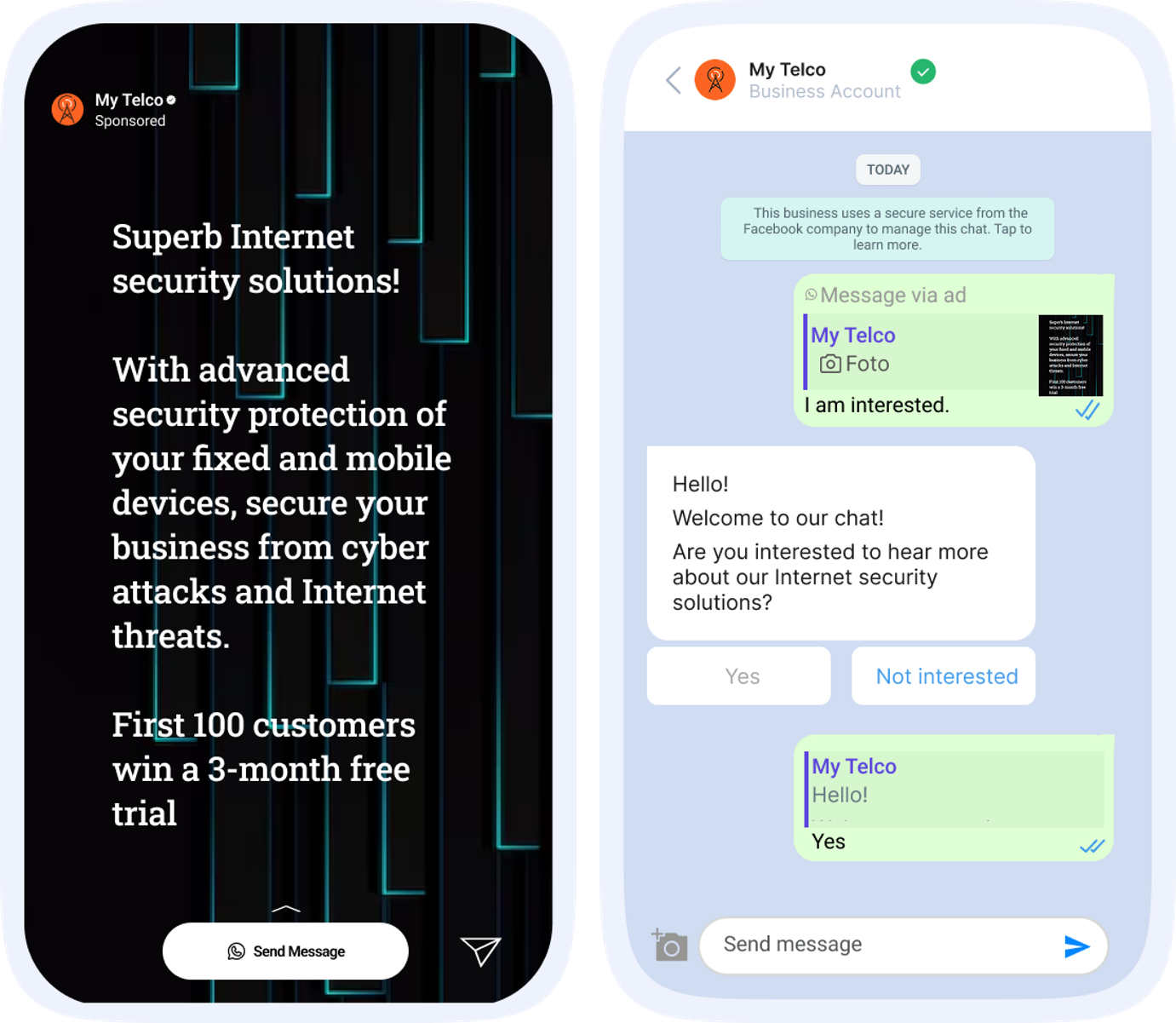
2. Use smart chatbots for self-service
Deploy chatbots on WhatsApp, Messenger, Viber, and RCS to offer 24/7 support. Combine automation with human escalation (if needed) so customers can resolve billing questions, schedule visits, or report issues without calling a contact center. This reduces phone calls, improves response times, and allows customer support teams to focus on complex cases.

3. Improve technician scheduling
Enable one-click technician booking, send reminders, and allow rescheduling via chat. Field staff can upsell add-ons on-site, increasing ARPU per visit while reducing missed appointments and delivering high-quality service that customers notice.

4. Support installations with video
Offer real-time video support to guide customers through self-install steps. This minimizes home visits, reduces service desk load, speeds up activation, and reduces calls to your support team.
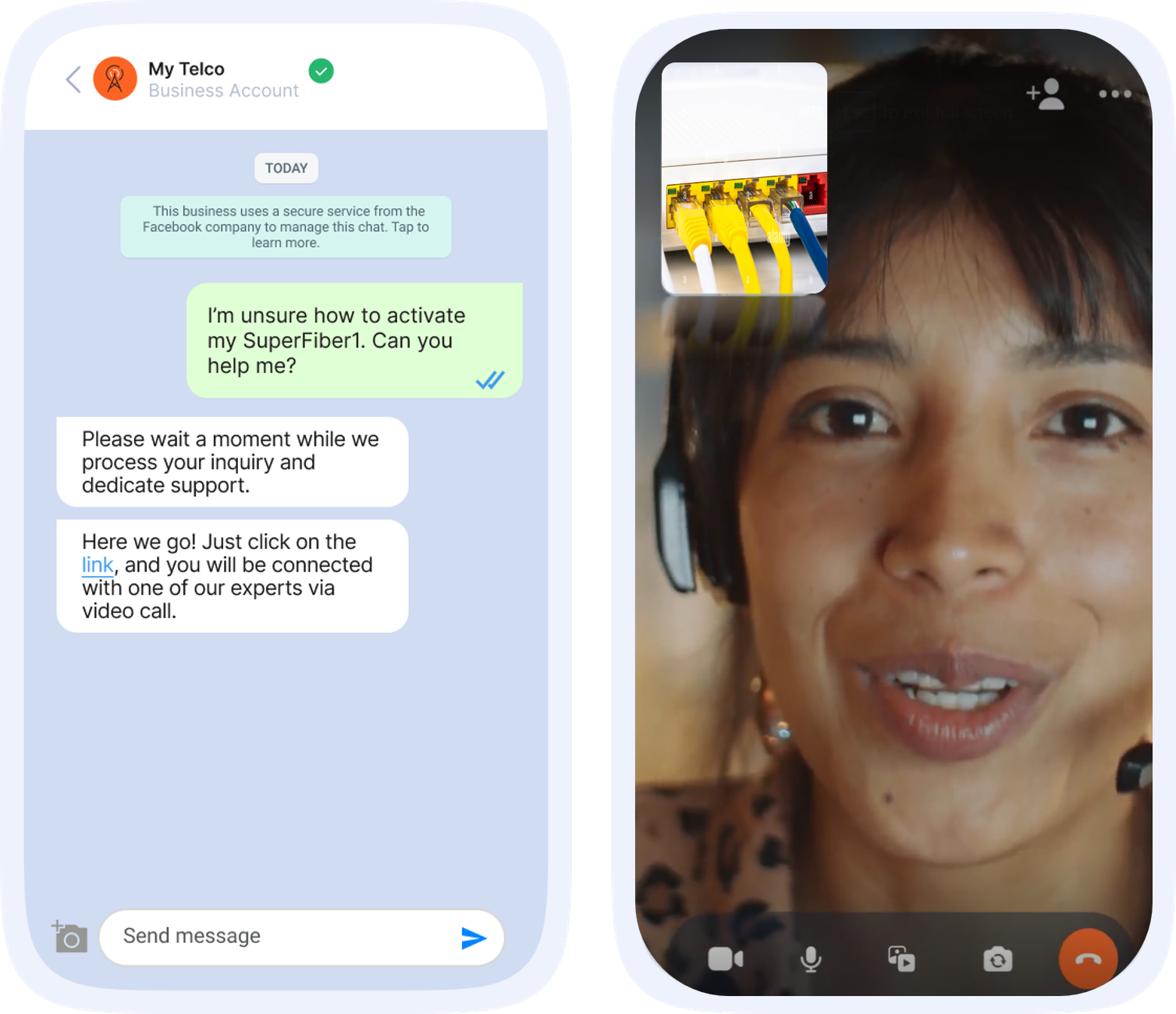
5. Proactively communicate outages
Use messaging channels to send real-time alerts about service issues or planned maintenance. Transparency builds trust and helps deflect inbound complaint calls.
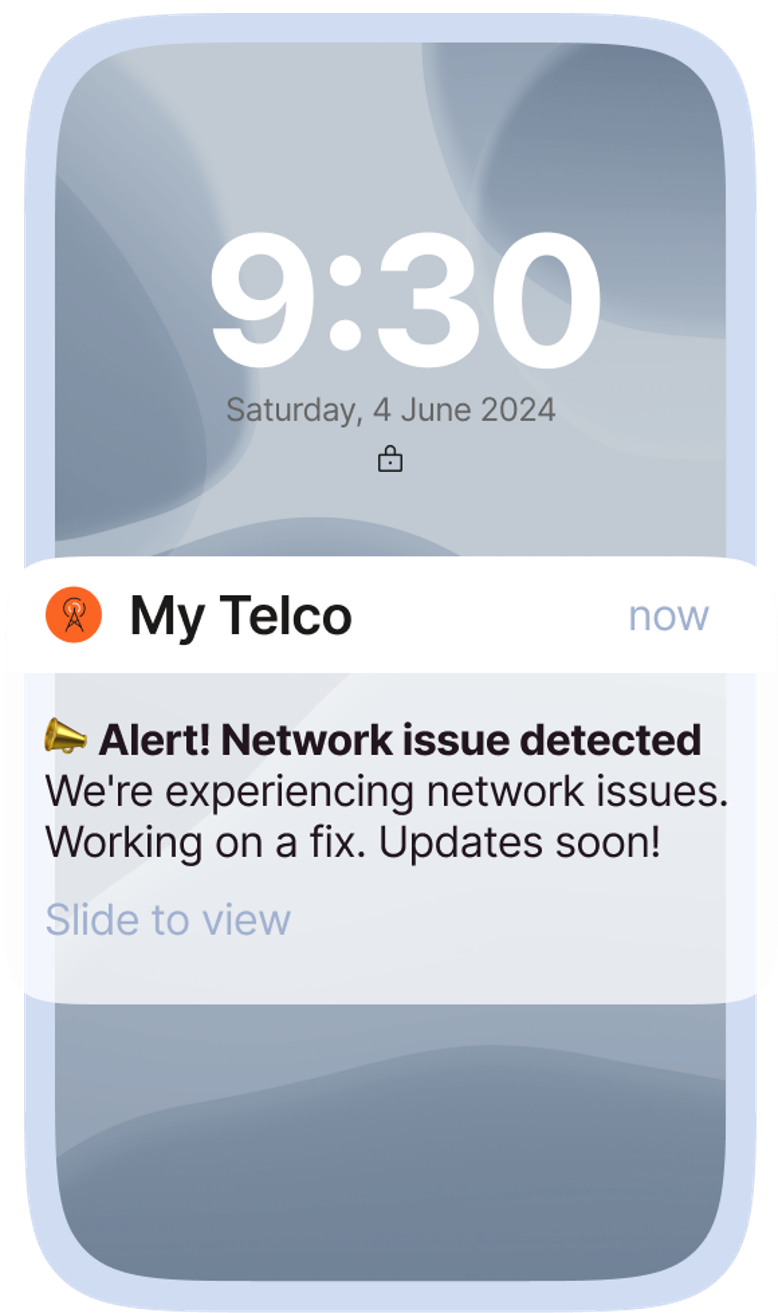
6. Automate billing and usage notifications
Send automated updates for invoices, balances, and data usage. Follow up with conversational debt collection reminders and secure payment links over chat. Customers feel in control, and billing-related calls drop significantly.

7. Use AI for smarter CX and operations
For ISPs, using AI means helping customers: predicting issues before they happen, routing requests to the right agent, and giving clear, instant answers to common questions.
Practical AI use cases for ISPs include:
- Predicting outages or network slowdowns so you can warn customers early
- Suggesting the best-fit service plan or upgrade based on real usage data
- Automating appointment scheduling and follow-ups to reduce no-shows
- Spotting churn signals and triggering personalized save offers
8. Personalize upsell and retention campaigns
Leverage customer data to offer plan upgrades, streaming bundles, or loyalty rewards. Trigger contextual retention offers before contract expiry to prevent churn.
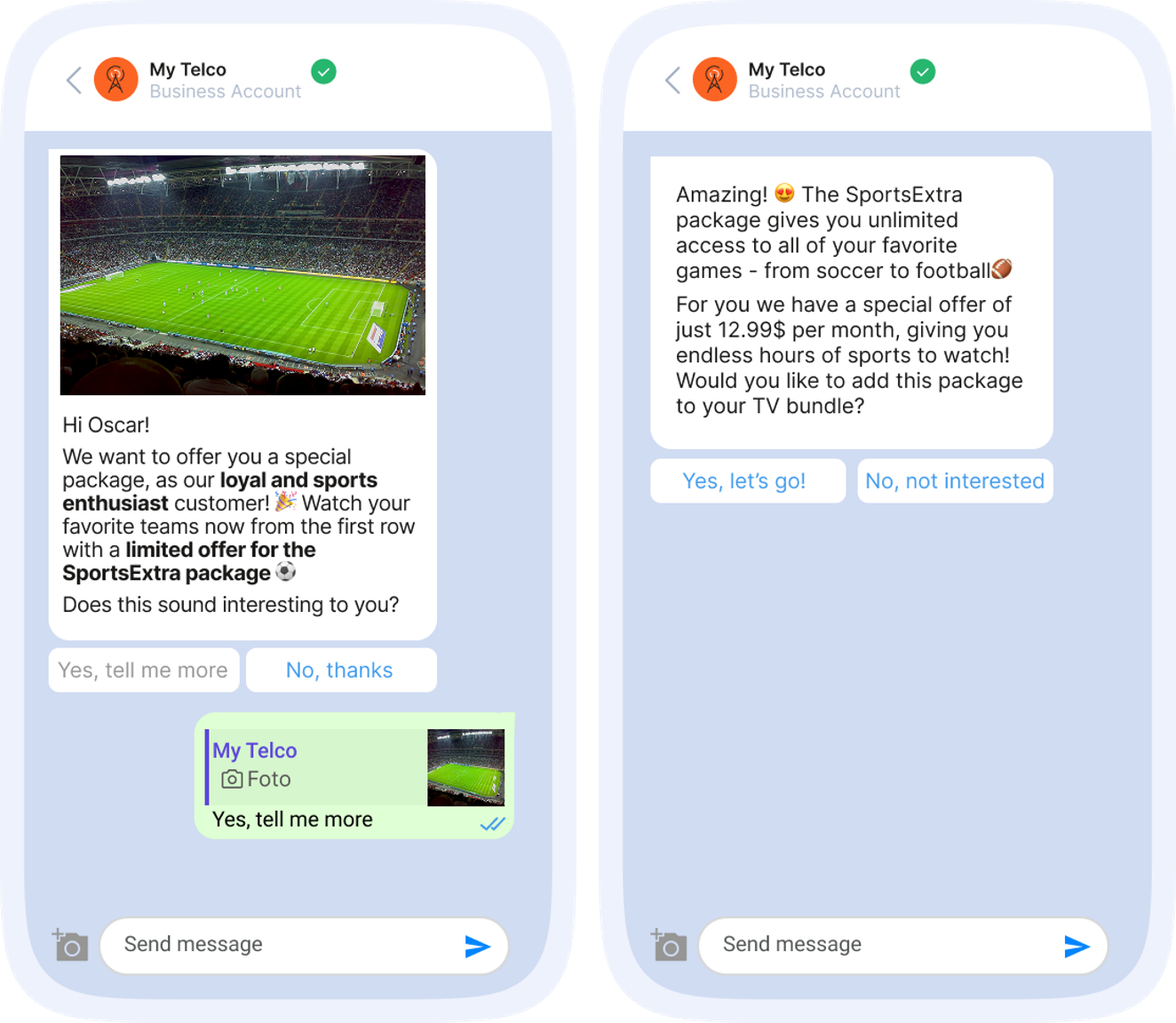
Telekom Deutschland: Elevating customer engagement with RCS Business Messaging
Customers were sent an eye-catching RCS message straight into their default messaging app via Moments. Unexpected questions were directed to the right human agent via Conversations.
On the backend, Conversations also gave Telekom Deutschland agents a clear view of any customer’s interaction with a message. This helped the agents fast-track any conversation to conversion. .
-
2x
better performance than previous SMS-based campaign .
Virgin Mobile (now Virgin Media O2): Increased engagement and phone upgrades through rich, interactive RCS messages
Virgin wanted to start creating more engaging campaigns, while retaining the great reach and reliability that SMS campaigns delivered. They saw a good opportunity for a test case: an upcoming offer on some of the latest Samsung phones.
Together, with Virgin Mobile’s marketing team, our Professional Services planned out an RCS campaign that would bring the offer to life.
Customers who were identified for a handset upgrade were sent rich marketing messages featuring image-rich carousels of the new device. The campaign approach, including which customers should be targeted and their respective journeys, was executed via our customer engagement solution, Moments. .
-
93%
delivery rate . -
60%
seen rate .
9. Collect feedback and act on it
Send CSAT or NPS surveys after key interactions. Use sentiment analysis to spot dissatisfaction early and take action before customers switch providers.

10. Make security and compliance a CX differentiator
Customer trust is one of the most valuable assets an Internet Service Provider can build. As more touchpoints move online, so does the responsibility to protect sensitive data.
ISPs can strengthen trust by:
- Investing in advanced cybersecurity and fraud detection systems
- Ensuring regulatory compliance with GDPR, CCPA, and other data privacy laws
- Using AI-powered anomaly detection to catch unusual activity before it escalates
11. Simplify equipment returns
Digitize the process of returning modems, routers, or set-top boxes. Automated reminders and easy instructions speed up account closure and improve asset tracking.

12. Embrace partnerships and new services
The future of ISP growth lies in offering more than connectivity. Bundle security software, cloud storage, or streaming subscriptions to add value. Partnerships with leading tech players help you stay competitive and attract new audiences.
13. Explore IoT and smart-home opportunities
Connected devices give Internet Service Providers an entirely new way to add value. From smart thermostats and security cameras to connected appliances, customers want their homes to work seamlessly and they need reliable, high-speed internet to make it happen. This not only deepens customer relationships but also opens up new revenue streams and positions ISPs as trusted technology partners in the connected-home era.
Building the connected future
Transforming the ISP customer experience doesn’t have to mean overhauling everything at once. The most successful providers start by digitizing key journeys, automating support where it matters most, and using data to personalize interactions. All areas where Infobip can help.
With Infobip, you get a partner who understands both telco infrastructure and customer engagement:
- 800+ direct operator connections
- 3,500+ employees across 75+ offices
- Operations in 190+ countries
Our omnichannel platform brings together messaging, chatbots, automation, and analytics in one place, so you can provide proactive, personalized, and secure experiences across every channel your customers use.










